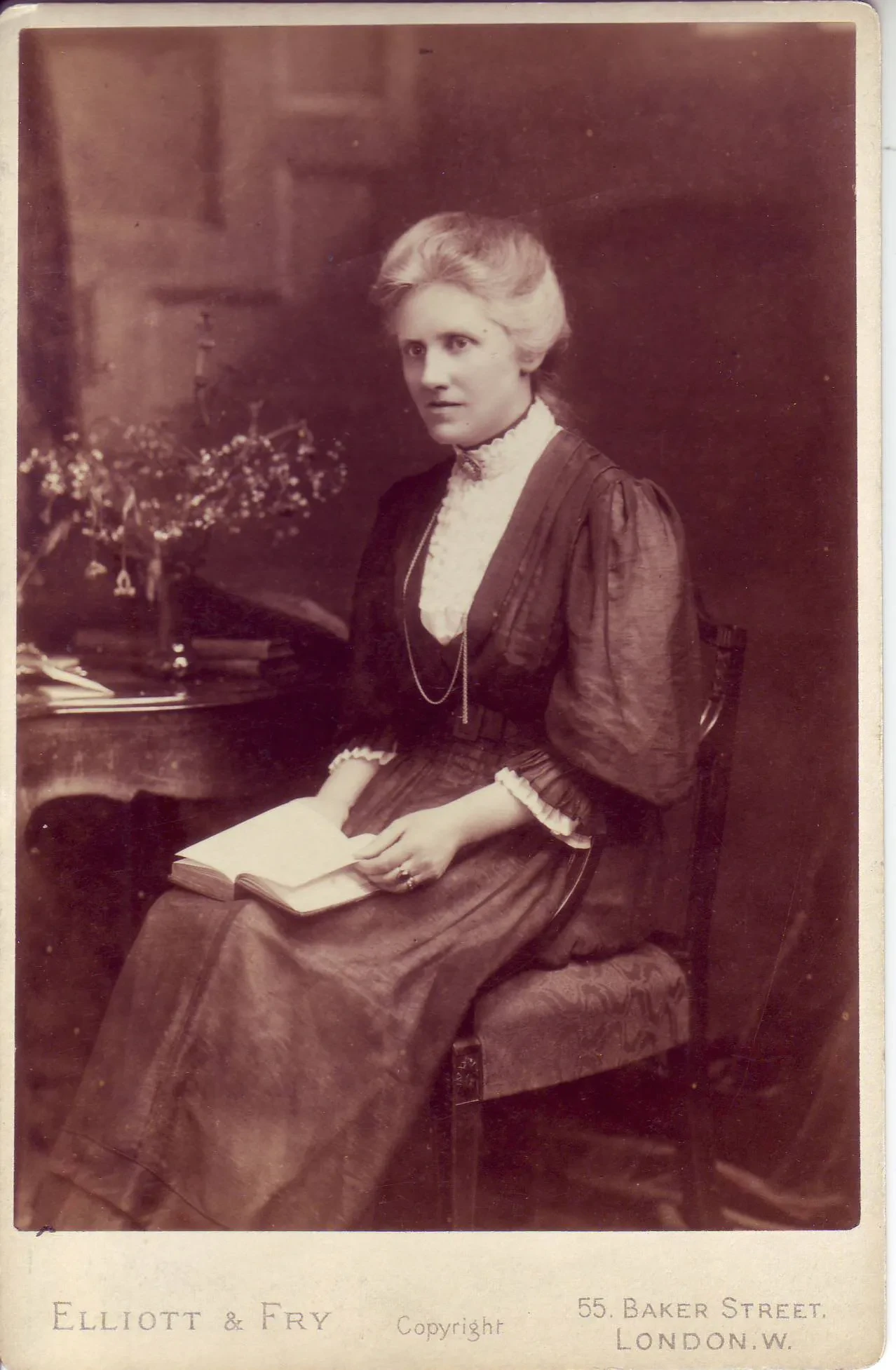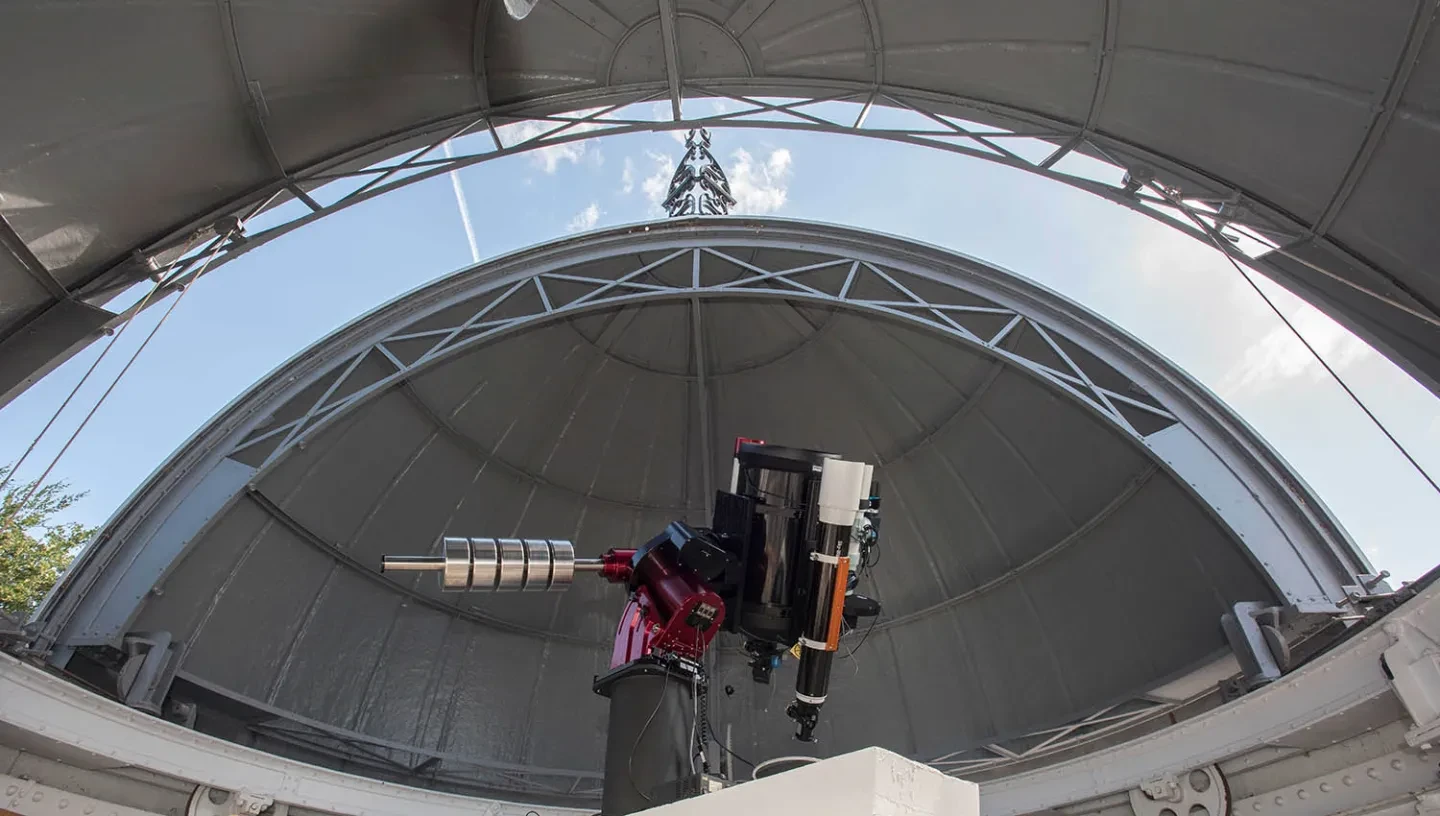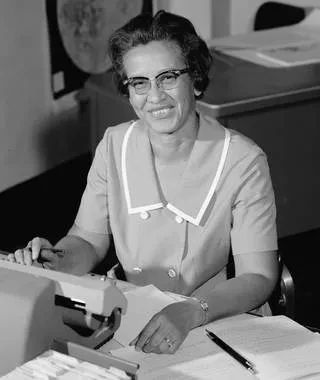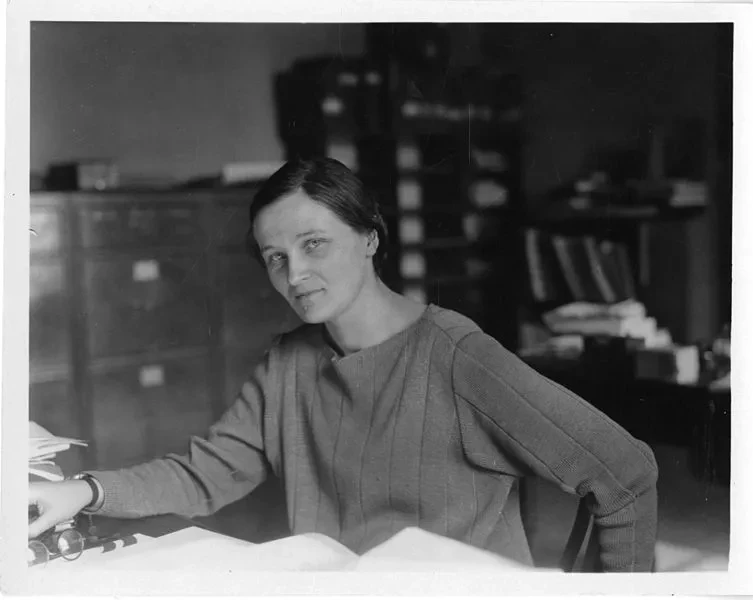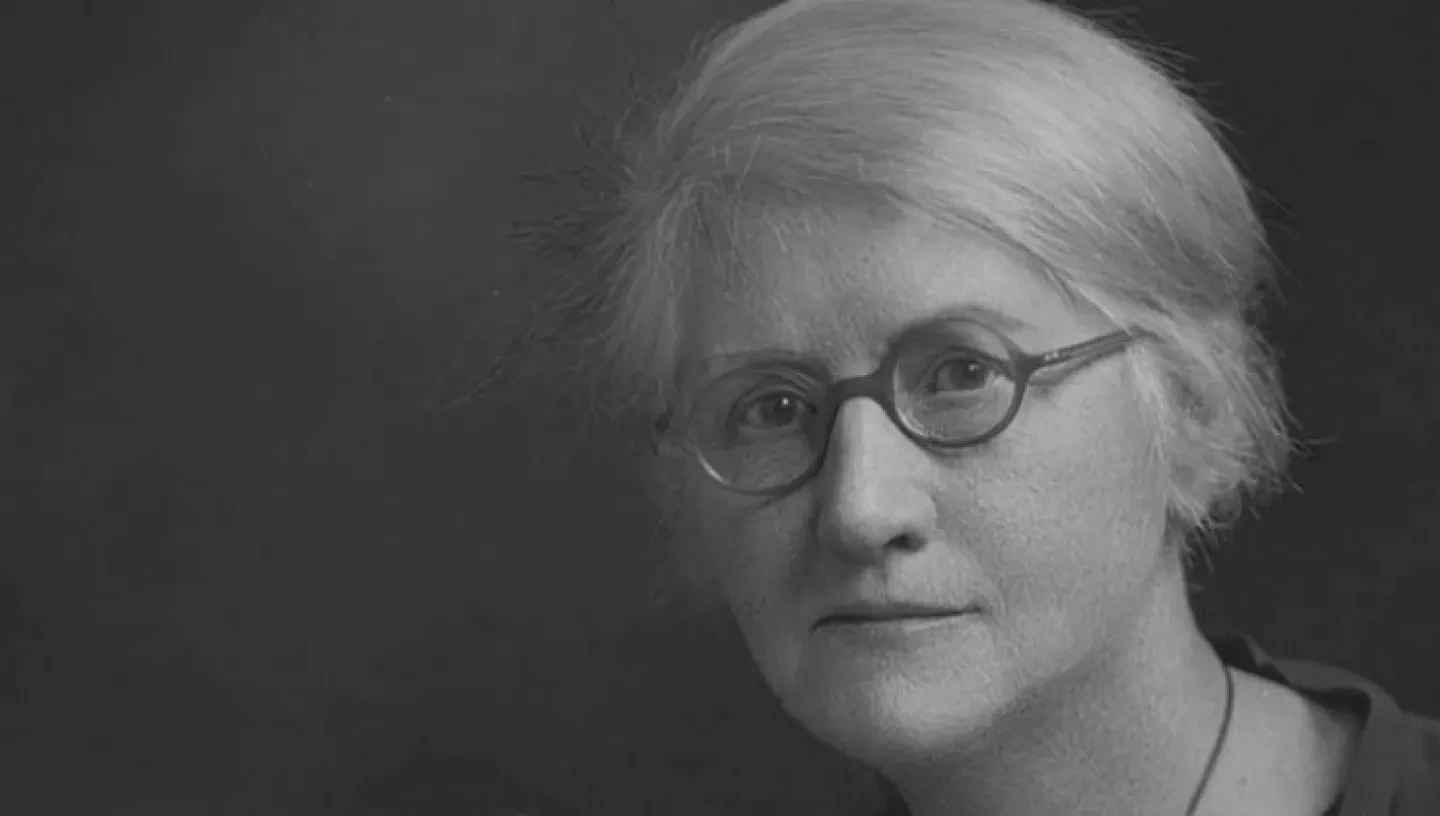
Einstein, Newton and Galileo are names we have heard numerous times. But who are the women who have changed the world of science, and why don’t we know their names too?
In the early 1890s, lady computer at the Royal Observatory Greenwich Isabella Jane Clemes wrote:
The profession of astronomy is limited for men, and must necessarily, under the most favourable circumstances, be still more so for women. At the present time there are less than half a dozen women in England who are following astronomy as a profession, and it is improbable that there will ever be employment for more than twenty, either at Greenwich or elsewhere.
Although women's role in science has changed dramatically since this, there are many forgotten women in scientific history.
Annie Maunder (1868 – 1947)
Annie Maunder was one of the first 'lady computers' at the Royal Observatory Greenwich. An astronomer and mathematician, she worked in Greenwich for five years.
‘Women in the 19th century were commonly used as computers, because computers at the time didn’t really exist’, says Emily Drabek-Maunder, astronomer at Royal Museums Greenwich. ‘Annie, as well as many other female scientists, would do the complex calculations that a computer would now do.’
When Maunder married in 1895, she had to give up her job because of civil service rules. However she continued to study astronomy, organising solar eclipse expeditions and photographing astronomical events.
‘She was one of the first pioneers of astrophotography’ says Drabek-Maunder. ‘She also had to make her own equipment, because it just didn’t exist at the time.’
Maunder captured images of the Sun’s atmosphere during a solar eclipse, and in 1898 she captured a coronal streamer, a ray-like structure appearing to burst from the Sun.
Maunder was also one of the first female fellows of the Royal Astronomical Society.
In 2018 the Royal Observatory opened the Annie Maunder Astrographic Telescope.
Go on a tour of the Annie Maunder Astrographic Telescope
Caroline Herschel (1750 – 1848)
Caroline Herschel was a German astronomer who was the first paid female astronomer in history.
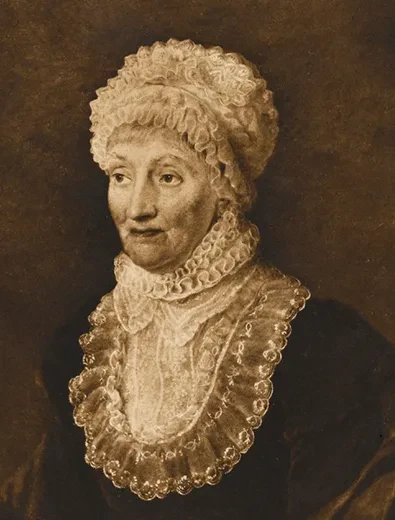
Caroline originally came to Britain with her brother William. William was a musician, and the pair performed together often.
William’s interest moved to astronomy, and Caroline continued to support him. In 1781 William discovered the planet Uranus, and shortly thereafter became court astronomer to the royal family.
It was then that Caroline was trained to be an assistant astronomer.
Caroline discovered 8 comets during her lifetime. When she discovered the first, in 1786, her brother was summoned to Windsor Castle to demonstrate her comet to the royal family.
She also updated Flamsteed’s Star Catalogue, which contained nearly 3,000 stars.
In 1787 she was granted a salary of £50 by King George III.
Alice Everett (1865 – 1949)
Alice Everett was employed as one of the first lady computers at the Royal Observatory Greenwich. It was Everett who suggested to Annie Maunder that she too seek employment at Greenwich.
Everett started work at the Royal Observatory on 14 April 1890, alongside three other women, Isabella Jane Clemes, Edith Mary Rix and Harriet Maud Furniss.
Everett was assigned to the Astrographic Catalogue, which aimed to survey the entire sky and catalogue all the stars that were brighter than 11 magnitude.
However women were only employed at the Royal Observatory until 1895.
After this, Everett secured a position at the Observatory in Potsdam. Later in life she was also one of the founding members of what is now known as the Royal Television Society. Of 325 foundation members she was one of only four women.
Maria Mitchell (1818 – 1889)
Maria Mitchell was an American astronomer, who discovered comet C/1847 T1, otherwise known as Miss Mitchell’s Comet. She was only the third woman ever to discover a comet.
‘She was really passionate about astronomy, her family encouraged her to be educated like the boys in her family. She just happened to be interested in comets, wanted to search for her own comet, and found it.’ Says Drabek-Maunder.
Aged 12 she helped her father, an amateur astronomer, to calculate the exact moment of a solar eclipse.
Mitchell was the first woman elected Fellow of the American Academy of Arts and Sciences.
Mitchell was an early advocate for maths and science education for young women and girls, and in 1835 she opened her own school. She was also involved in the suffrage and anti-slavery movements.
After discovering comet C/1847 T1, Mitchell was awarded a gold medal by King Christian VIII of Denmark.
Katherine Johnson (1918 – 2020)
Katherine Johnson was a software engineer, and one of the first African American women to work at NASA.
She worked on the Mercury, Gemini, and Apollo missions, alongside Mary Jackson and Jackie Vaughn. Although they worked for NASA they faced much discrimination and were forced to adhere to state segregation laws. They had to eat and work separately, and use segregated bathrooms.
During her time as a computer at NASA, Johnson demanded that herself, Jackson and Vaughn be allowed into the all-male scientific briefings, and she used the ‘whites-only’ bathroom.
Her calculations of orbital mechanics were critical to the first, and subsequent, US space flights. She helped analyse the flight trajectory for Alan Shepard, the first American in space. ‘She’s the reason why the first astronauts were able to go to the Moon.’ Says Drabek-Maunder.
She was fictionalised in the 2016 film Hidden Figures and was awarded the Presidential Medal of Freedom in 2015. She passed away in February 2020 aged 101.
After a lifetime of reaching for the stars, today, Katherine Johnson landed among them. She spent decades as a hidden figure, breaking barriers behind the scenes. But by the end of her life, she had become a hero to millions—including Michelle and me. pic.twitter.com/isG29nwBiB
— Barack Obama (@BarackObama) February 24, 2020
Marie Tharp (1920 – 2006)
Geologist Marie Tharp is credited with creating the first scientific map of the Atlantic Ocean Floor, alongside geologist Bruce Heezen.
Tharp’s father worked for the Department of Agriculture and she often joined him on work trips, becoming interested in this field.
Her desire to study science coincided with the Second World War. During this time, women were encouraged to study what had previously been considered ‘manly’ degrees, such as science and technology.
Tharp enrolled in a petroleum geology program, making her one of the first ‘Petroleum Geology Girls’ when she graduated in 1944.
Interest for a map of the floor of the Atlantic Ocean grew during the Cold War, when the US Navy thought that it would be a useful strategic tool for submarine battles.
Tharp and Hezeen mapped the ocean floor using echo sounding. This means that high frequency sounds are sent into the ocean, and the delay in the reply of the echo is recorded.
However, women were forbidden from going on these research trips, because it was thought to be bad luck. This meant that Tharp was forced to do stay on land and do deskwork, turning the data that was collected into maps of the ocean floor.
It was in doing this that Tharp discovered that the Ocean’s floor was not flat, as was assumed at the time. Instead Tharp found that the ocean floor was made up of ridges, mountains and canyons.
The most integral discovery Tharp made was a mountain range which seemed to cut the large ocean basins in half.
These mid ocean ridges, as they were known, seemed to support Wegener’s Continental Drift Theory, which had been dismissed by the scientific community.
Continental Drift Theory is the theory that the Earth’s continents have moved over hundreds of thousands of years, and have ‘drifted’ across the ocean bed.
Hezeen dismissed Tharp’s findings as ‘girl talk’. However when a correlation was discovered between earthquake zones and the mid ocean ridges, he could not ignore what she had found. This discovery was key to our modern day understanding of plate tectonics.
Hezeen was credited with the findings, and it was him who presented them to the scientific community.
Cecilia Payne-Gaposchkin (1900 – 1979)
British-born scientist Cecilia Payne-Gaposchkin was an astronomer and astrophysicist whose 1925 thesis proposed that stars were mostly made up of hydrogen and helium.
Whilst at Newnham College Cambridge she became interested in astronomy. This interest drove her to Harvard, where she became the first person to earn a PhD in astronomy from Radcliffe College.
Her thesis proposed that stars were mostly made up of Hydrogen and Helium. ‘That is key to us understanding the universe, and no one really knows her name’ says Drabek-Maunder.
Astronomer Henry Norris Russell rejected this, as it went against the popularly held belief of the time, that the Sun and the Earth had the same elemental make up.
However after independent research proved that her thesis was in fact correct, Russell took the credit for the conclusions Payne-Gaposchkin reached.
‘She never got the credit she deserved.’ Says Drabek-Maunder.
